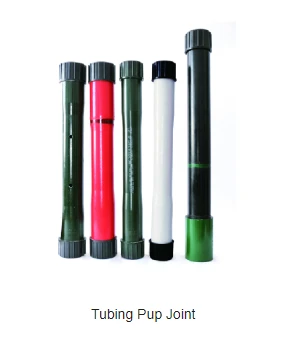- Afrikaans
- Albanian
- Amharic
- Arabic
- Armenian
- Azerbaijani
- Basque
- Belarusian
- Bengali
- Bosnian
- Bulgarian
- Catalan
- Cebuano
- Corsican
- Croatian
- Czech
- Danish
- Dutch
- English
- Esperanto
- Estonian
- Finnish
- French
- Frisian
- Galician
- Georgian
- German
- Greek
- Gujarati
- Haitian Creole
- hausa
- hawaiian
- Hebrew
- Hindi
- Miao
- Hungarian
- Icelandic
- igbo
- Indonesian
- irish
- Italian
- Japanese
- Javanese
- Kannada
- kazakh
- Khmer
- Rwandese
- Korean
- Kurdish
- Kyrgyz
- Lao
- Latin
- Latvian
- Lithuanian
- Luxembourgish
- Macedonian
- Malgashi
- Malay
- Malayalam
- Maltese
- Maori
- Marathi
- Mongolian
- Myanmar
- Nepali
- Norwegian
- Norwegian
- Occitan
- Pashto
- Persian
- Polish
- Portuguese
- Punjabi
- Romanian
- Russian
- Samoan
- Scottish Gaelic
- Serbian
- Sesotho
- Shona
- Sindhi
- Sinhala
- Slovak
- Slovenian
- Somali
- Spanish
- Sundanese
- Swahili
- Swedish
- Tagalog
- Tajik
- Tamil
- Tatar
- Telugu
- Thai
- Turkish
- Turkmen
- Ukrainian
- Urdu
- Uighur
- Uzbek
- Vietnamese
- Welsh
- Bantu
- Yiddish
- Yoruba
- Zulu
bull plug pressure rating
Understanding Bull Plug Pressure Ratings Key Considerations for Safety and Efficiency
Bull plugs are integral components in various industrial applications, particularly in the oil and gas, chemical, and water treatment sectors. These devices serve as temporary sealing devices for pipe ends, often during maintenance activities or when testing pressure in a system. One of the most critical aspects of a bull plug's functionality is its pressure rating, which directly correlates with safety and efficiency in operations.
What is a Bull Plug?
A bull plug, also known as a blind plug or sealing plug, is a cylindrical piece designed to fit snugly into the end of a pipe or fitting. Its primary function is to seal the system, preventing the escape of fluids and gases, and allowing for safe testing and inspection of pipeline systems. Made from durable materials such as stainless steel, carbon steel, or high-grade plastics, bull plugs are designed to withstand high pressures and potentially corrosive environments.
Importance of Pressure Ratings
The pressure rating of a bull plug indicates the maximum internal pressure the plug can withstand without failing. This rating is crucial for several reasons
1. Safety Using a bull plug that cannot handle the operational pressure leads to catastrophic failures, which can result in accidents, equipment damage, or environmental hazards. Ensuring that the bull plug’s pressure rating exceeds the maximum anticipated pressure within the system is essential for ensuring operational safety.
2. System Integrity A proper pressure rating ensures the integrity of the entire pipeline system. If a bull plug fails during operation, the resulting pressure surge can cause extensive damage not only to the plug itself but also to the surrounding system components.
3. Regulatory Compliance Many industries are governed by strict safety regulations and standards concerning pressure containment. Using bull plugs with verified pressure ratings is often a requirement for compliance with local and international safety standards.
4. Operational Efficiency Components that are approved for specific pressure ratings can enable enhanced operational efficiency. This is especially pertinent in high-pressure environments where unplanned downtime due to equipment failure can be costly.
bull plug pressure rating

Factors Affecting Pressure Ratings
Several factors contribute to the pressure rating of bull plugs, including
1. Material Choice The material used in manufacturing bull plugs significantly affects their pressure rating. High-strength materials like stainless steel can handle much higher pressures compared to plastic plugs.
2. Design and Manufacturing Standards Adherence to industry standards during the design and manufacturing process is vital. Organizations such as the American National Standards Institute (ANSI) and the American Society of Mechanical Engineers (ASME) provide guidelines that help ensure the reliability of pressure ratings.
3. Temperature Considerations The temperature of the environment in which the bull plug operates can have a profound effect on its performance. High temperatures can weaken certain materials, effectively lowering their pressure rating.
4. Testing Procedures Thorough testing, including hydrostatic and pneumatic testing, is essential to validate the pressure ratings of bull plugs. These tests simulate real-world conditions to ensure that the plugs can withstand expected pressures safely.
Conclusion
In conclusion, understanding bull plug pressure ratings is paramount for anyone involved in industries requiring the secure containment of fluids and gases. The safety and integrity of pipeline systems heavily depend on using the right bull plugs designed for the correct pressure ratings. With careful consideration of materials, compliance with industry standards, and thorough testing procedures, operators can ensure their systems operate safely and efficiently.
Investing in quality bull plugs and being diligent about their pressure ratings is not just a matter of regulation but a commitment to operational safety and integrity. By maintaining awareness of these factors, industries can significantly reduce the risk of equipment failure and improve overall operational efficiency, ensuring a safer environment for both personnel and equipment.
-
Well Casing Extension Couplings – Applications and InstallationNewsJun.06,2025
-
Types of Crossover Subs in Drilling & CompletionNewsJun.06,2025
-
Key Features of High-Quality Tubing Pup JointsNewsJun.06,2025
-
Installation and Maintenance Tips for Steel Couplings for PipeNewsJun.06,2025
-
How to Select the Right Pup Joint for Oil & Gas OperationsNewsJun.06,2025
-
Applications of Stainless Steel Pipe CouplingsNewsJun.06,2025







